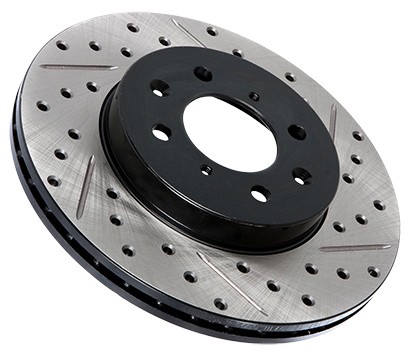
Why do brake discs warp?
Brake discs are large metal discs visible behind the wheels of a car. They rotate with the wheels so that when the brake pads grip them, they stop the car. Brake discs must withstand a huge amount of...
Brake discs are large metal discs visible behind the wheels of a car. They rotate with the wheels so that when the brake pads grip them, they stop the car. Brake discs have to withstand enormous amounts of heat. Not only that, they have to dissipate this heat into the air as quickly as possible, because the brakes are likely to be applied again after a short time. If the surface of the disc becomes uneven over time, braking becomes jerky and less effective. This is usually referred to as deformation.
How brake discs warp
A common misconception when referring to rotors as "warped" is that they stop being straight as they rotate (similar to how a bicycle wheel warps). For cars to have this, the rotors themselves would have to be defective, since the temperature required for the metal to become so elastic, soft enough that it could simply be bent, would be enormous.
Instead, warping really refers to the fact that the flat surface of the rotor becomes uneven. Heat is the main reason for this and can cause warping in more than one way:
Brake disc glazing with brake pad material. This is because brake pads, like tires, are made with varying degrees of hardness and stickiness depending on the intended purpose. When brake pads made for normal road use become very hot when driving at high speeds and braking, or when riding the brakes for long periods of time, the grippy material can become too soft and, in effect, "stain" the brake discs. This means that the brake pads will not grip the metal when braking repeatedly, resulting in reduced braking performance that is less smooth than before.
Wear on the rotor surface and harder areas in the metal remain slightly raised above the surface.. The reason that brakes don't usually wear much has to do with a fairly simple concept. Because the metal of the rotor is harder than the brake pad that puts friction on it, the pad wears out while the rotor remains largely unaffected. With excessive heat, the metal becomes soft enough for the pad to wear down the surface of the rotor. This means that the less dense areas in the metal wear faster, while the harder areas bulge out, causing deformation.
How to prevent warped brake discs
To prevent the brake discs from becoming coated with brake pad material, be aware of how much the vehicle is braking compared to normal operation. On a long descent, try to control the speed of the vehicle by downshifting the transmission. For an automatic, shifting to "3" is usually the only option, while vehicles with a manual or other shiftable transmission may select the best gear based on engine RPM. When the brakes are hot, never sit with the brake pedal depressed in one place.
In addition, the first time the brake pads are installed, they should be properly broken in so that they do not leave too much material on the brake disc. This usually involves accelerating the car to road speed and then braking until it is moving ten miles per hour slower. After this has been done a few times, you can proceed to brake to a complete stop. The first few full stops after this should be done with caution. This allows the brake pad to work better during heavy braking on the road.
The steps that can be taken to prevent excessive wear on the brake disc surface are similar to the steps to prevent glazed rotors. Be sure to avoid sudden braking if the brake discs have become very hot as a result of prolonged use.
What do warped rotors look like?
There are several signs to look out for when diagnosing deformed rotors:
If the brake discs are glazed, you may hear excessive squealing when braking or even smell burnt rubber.
If braking suddenly becomes harsh and inconsistent, the brake discs should be suspected first.
If the car vibrates when stopped, the brake disc is most likely deformed.
